You are using an out of date browser. It may not display this or other websites correctly.
You should upgrade or use an alternative browser.
You should upgrade or use an alternative browser.
Suspicious voltage drop...
- Thread starter DorianL
- Start date
8
87vette81big
Guest
Test again at 2,000 Rpms on the dash tachometer Dorian .DorianL said:What do you guys think? My alt is a 55Amp Bosch. At idle I get 13.6 V
If I turns the headlights on, the voltage drops to 12.6 V
Something tells me that's prob not normal.
Correct?
Small Bosch alternators don't put out much current at idle.
Its a Toy compared to the CS144 I built for you on the TT.
87vette81big said:Test again at 2,000 Rpms on the dash tachometer Dorian .DorianL said:What do you guys think? My alt is a 55Amp Bosch. At idle I get 13.6 V
If I turns the headlights on, the voltage drops to 12.6 V
Something tells me that's prob not normal.
Correct?
Small Bosch alternators don't put out much current at idle.
Its a Toy compared to the CS144 I built for you on the TT.
Will do - that makes sense... Makes a LOT of sense.
philly
solid fixture here in the forum
yep low revs that alternator is barely turning... for everyones information if you have a car that you only start once a month to "charge the battery" and let it idle in the driveway... it can take 30-45 minutes once a month of idling with no auxillary current draw for a stock sized alternator to restore the lost power from time sitting and the actual starting process you just put it through. guys who have very short (under 5 minute) drives to work have more frequent battery problems because they dont get enough recharge time throughout their use. just a little fyi
philly said:yep low revs that alternator is barely turning... for everyones information if you have a car that you only start once a month to "charge the battery" and let it idle in the driveway... it can take 30-45 minutes once a month of idling with no auxillary current draw for a stock sized alternator to restore the lost power from time sitting and the actual starting process you just put it through. guys who have very short (under 5 minute) drives to work have more frequent battery problems because they dont get enough recharge time throughout their use. just a little fyi
Yes, I am having those issues, already with the Ghia. I only drive it on weekends (crappy weather) and starting is becoming tough. I think one of the issues is that the Ghia is constantly searching for the key even when it's garaged.
Hmm, I'm going to see if I can find a way to get a permanent source of electricity in my garage and set up a trickle charge. For moment I have to extension cable juice over...
8
87vette81big
Guest
My old 1963 Pontiac Grand Prix is still together and running with 403 Olds Power & Turbo 400 Trans.
That car is basic as it gets.
The Delco 12 SI I built for it years ago draws just 1 milliamp Reverse diode bias current.
The car can sit 6-12 months.
Fires righr up every single time within 5-seconds.
Why I lke basic & simple.
Take the electronics out. Just a radio needed.
That car is basic as it gets.
The Delco 12 SI I built for it years ago draws just 1 milliamp Reverse diode bias current.
The car can sit 6-12 months.
Fires righr up every single time within 5-seconds.
Why I lke basic & simple.
Take the electronics out. Just a radio needed.
DorianL said:Yes, I am having those issues, already with the Ghia. I only drive it on weekends (crappy weather) and starting is becoming tough. I think one of the issues is that the Ghia is constantly searching for the key even when it's garaged.
Hmm, I'm going to see if I can find a way to get a permanent source of electricity in my garage and set up a trickle charge. For moment I have to extension cable juice over...
It probably won't change anything, but before jumping to conclusions, why not
measure the current draw on the battery when everything is turned off. It's so
easy to do, shouldn't take more than 10 minutes. It would help next time you
encounter this problem to know what kind of drain is Ok and what is not.
Maybe you have a short somewhere and current draw is higher than it should be.
If you have the battery specs, you should be able to calculate how long the
battery will last to get an idea how if the battery is holding up like it should.
Indycars said:DorianL said:Yes, I am having those issues, already with the Ghia. I only drive it on weekends (crappy weather) and starting is becoming tough. I think one of the issues is that the Ghia is constantly searching for the key even when it's garaged.
Hmm, I'm going to see if I can find a way to get a permanent source of electricity in my garage and set up a trickle charge. For moment I have to extension cable juice over...
It probably won't change anything, but before jumping to conclusions, why not
measure the current draw on the battery when everything is turned off. It's so
easy to do, shouldn't take more than 10 minutes. It would help next time you
encounter this problem to know what kind of drain is Ok and what is not.
Maybe you have a short somewhere and current draw is higher than it should be.
If you have the battery specs, you should be able to calculate how long the
battery will last to get an idea how if the battery is holding up like it should.
Golden. I wonder how many Amps my DMM can take...
Most can handle one amp, but the later ones can take 10 amps. The problem is
you don't know for sure what you need until it's too late. There should be a fuse
to protect the meter, so the worst you should have to do is replace the fuse ......
THAT IS THEORETICALLY ??? If you don't have a problem other than it's not charging
enough, then it should exceed 1/2 an amp at the most and likely something much less.
You could put a resistor in series with the meter to start out with. Might give you
some kind of idea what you are dealing with.
This is the meter I have, you can see there are two setups to measure current, but
ONLY one way should be used at first until you know how much current you are dealing
with. It's the only time I put the red lead in the left jack.
I'm sure you already were aware of the above, but some may not if they read
this thread.
Attachments
Interesting. The plot thickens.
On the ghia my battery is typically flat after one week of not driving. I thought that was quick but who knows, maybe it's the keyless entry draw.
Well I measured that, the draw at rest, everything off except clock and keyless entry is: 0.08 Amps.
If I turn the headlights on, the draw is 3.5 Amps.
I swapped out my optima bad out in a regular batt. At idle hot, it was 13.89 volts. Idle hot with lights on, 13.67 volts. Raising rpm to 2-3000 had no effect on the voltage.
Hmm my guess is the Optima red top has come to the end of its long, distinguished career. I'll have to check when I bought it, but I think it's 7-8 years old.
On the ghia my battery is typically flat after one week of not driving. I thought that was quick but who knows, maybe it's the keyless entry draw.
Well I measured that, the draw at rest, everything off except clock and keyless entry is: 0.08 Amps.
If I turn the headlights on, the draw is 3.5 Amps.
I swapped out my optima bad out in a regular batt. At idle hot, it was 13.89 volts. Idle hot with lights on, 13.67 volts. Raising rpm to 2-3000 had no effect on the voltage.
Hmm my guess is the Optima red top has come to the end of its long, distinguished career. I'll have to check when I bought it, but I think it's 7-8 years old.
If your chasing an intermittent, engine miss or stumble, youll need to logically isolate and test each potential source, and while it might be related to fuel pressure, carburetor float levels or crud in the carburetor fuel bowls, or a vacuum leak, on a hose or the brake booster, or fuel pressure or volume of fuel delivery or the carb fuel level, you might also be dealing with a loose electrical connection , on the battery , other wiring or system ground in the cars ignition system or sensors, or something simple like water in the fuel, or a clogged fuel filter, the point here is LOGICALLY ISOLATE AND TEST THE POTENTIAL OPTIONS, AND IT HELPS TO HAVE A FACTORY SHOP MANUAL< A MULTI METER A VACUUM GAUGE AND TAKING NOTES WON,T HURT EITHERDorianL said:Ummm. The batt is 10 years old.
you did good the last one of those I bought lasted less than 5 years (Optima red top) but it was in a generator that only got used intermittently
clean the cable connection to battery terminals area carefully
use of a battery post cleaning brush tool is usually helpful
http://custombatterycables.com/product_info.htm
I learned decades ago to swap to a 140 amp-200 amp alternator,
as the stock 75-105 amp alternators on muscle cars and earlier corvettes are marginal at best/
if you shop carefully they can usually be found locally at some alternator re-builders for under $150
both my corvettes have 200 amp versions purchased NEW for under $250
while that may be over-kill to some I find the electric fans on the corvette and ignition and head lights work noticeably better
https://www.dbelectrical.com/alternators/automotive/chevrolet/corvette/5-7-liter/
http://www.ecklerscorvette.com/corvette-alternator-140-amp-chrome-power-master-1969-1982.html
having heavy gauge COPPER battery and ground connection cables with the correct ends, and a 140 amp-to-200 amp alternator goes a long way towards
reducing potential battery and starter related issues

use of this common anti-seize paste on the connecting thread surfaces noticeably reduces corrosion and helps electrical conductivity
http://www.harborfreight.com/battery...ner-94450.html
http://www.napaonline.com/Catalog/Ca...940_0212865359
coat the cable connections with the proper anti corrosive paste
http://s7d9.scene7.com/is/image/GenuinePartsCompany/NWMDC?$Product=GenuinePartsCompany/55709
the funny part is that many times the battery gets replaced and the car runs fine and the owner is convinced it was the battery's fault as a result, when the fact was that the guy replacing the battery at most shops simply doesn,t bother to check the old battery because he only makes MONEY replacing it with a NEW battery, yet the problem was solved when the tech, cleaned the battery terminals and connecting cable contact surfaces before installing the new battery, and it would also have been cured if he had done the same connection clean-up on the cables and battery terminals on the OLD battery.
btw the most common electrically related problem I see on a consistent basis is corroded or badly rusted or defective battery connections and grounds so before you go crazy its a good idea to replace those as a first step in any electrical problem diagnoses
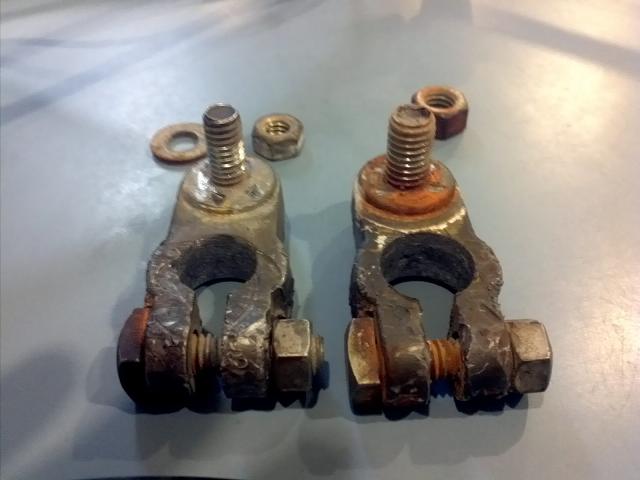
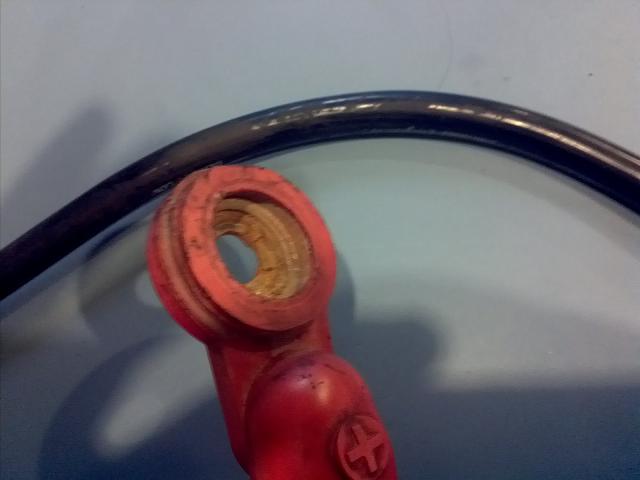
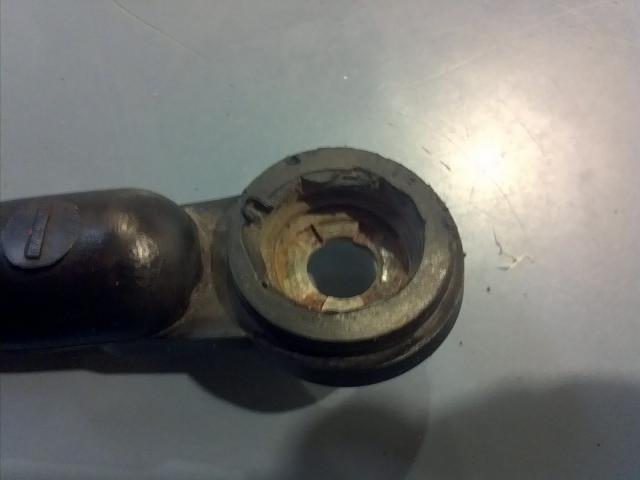
cleaning and coating the battery's terminal connections, cable ends, and electrical grounds, and verifying the connections are correctly tightened, goes a long way toward reducing potential starter/battery issues


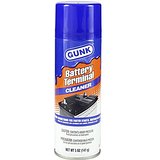
as always you simply isolate and test in a logical manor to find the cause, random guessing and parts replacement without testing gets damn expensive and your unlikely to randomly guess correctly before it costs you more than it should to correct! ,Id start with having a local auto parts store load test the battery after getting the multi meter out you have , and cleaning all the cable connections carefully and ohms test them
and yes you need a multi meter and if the battery checks out Id be looking at the connections on the starter and the starter itself
the threads have links youll need
http://garage.grumpysperformance.co...-auto-elecrtrical-connectors.3105/#post-68805
http://garage.grumpysperformance.co...trical-wiring-for-a-tbucket.10038/#post-39056
http://garage.grumpysperformance.co...vious-owner-butchered-wiring.3439/#post-19529
http://garage.grumpysperformance.com/index.php?threads/lots-of-wiring-info-diagrams.317/#post-84479
http://garage.grumpysperformance.com/index.php?threads/testing-an-alternator.3222/#post-46703
http://garage.grumpysperformance.co...urrent-flow-grounds-and-more.3504/#post-33363
http://garage.grumpysperformance.co...r-auto-elecrtrical-connectors.3090/#post-8220
http://garage.grumpysperformance.com/index.php?threads/heat-shrink-tubing.1443/#post-28050
http://garage.grumpysperformance.co...uys-don-t-look-at-the-clues.11176/#post-50124
http://garage.grumpysperformance.co...k-clunk-clunk-start-problem.11422/#post-54990
http://garage.grumpysperformance.com/index.php?threads/battery-charger-for-the-shop.928/#post-1565
http://garage.grumpysperformance.co...orvette-with-flicker-on-dash-and-radio.13593/
http://garage.grumpysperformance.co...rical-glitches-in-newer-cars.5492/#post-18411
http://garage.grumpysperformance.com/index.php?threads/digital-dash-swap-questions.3399/#post-8970
http://garage.grumpysperformance.co...er-repair-or-replacement-link.1006/#post-8030
http://garage.grumpysperformance.com/index.php?threads/c4-c5-corvette-trouble-codes.2697/#post-6985
http://garage.grumpysperformance.co...ntermitant-electrical-glitches.987/#post-1739
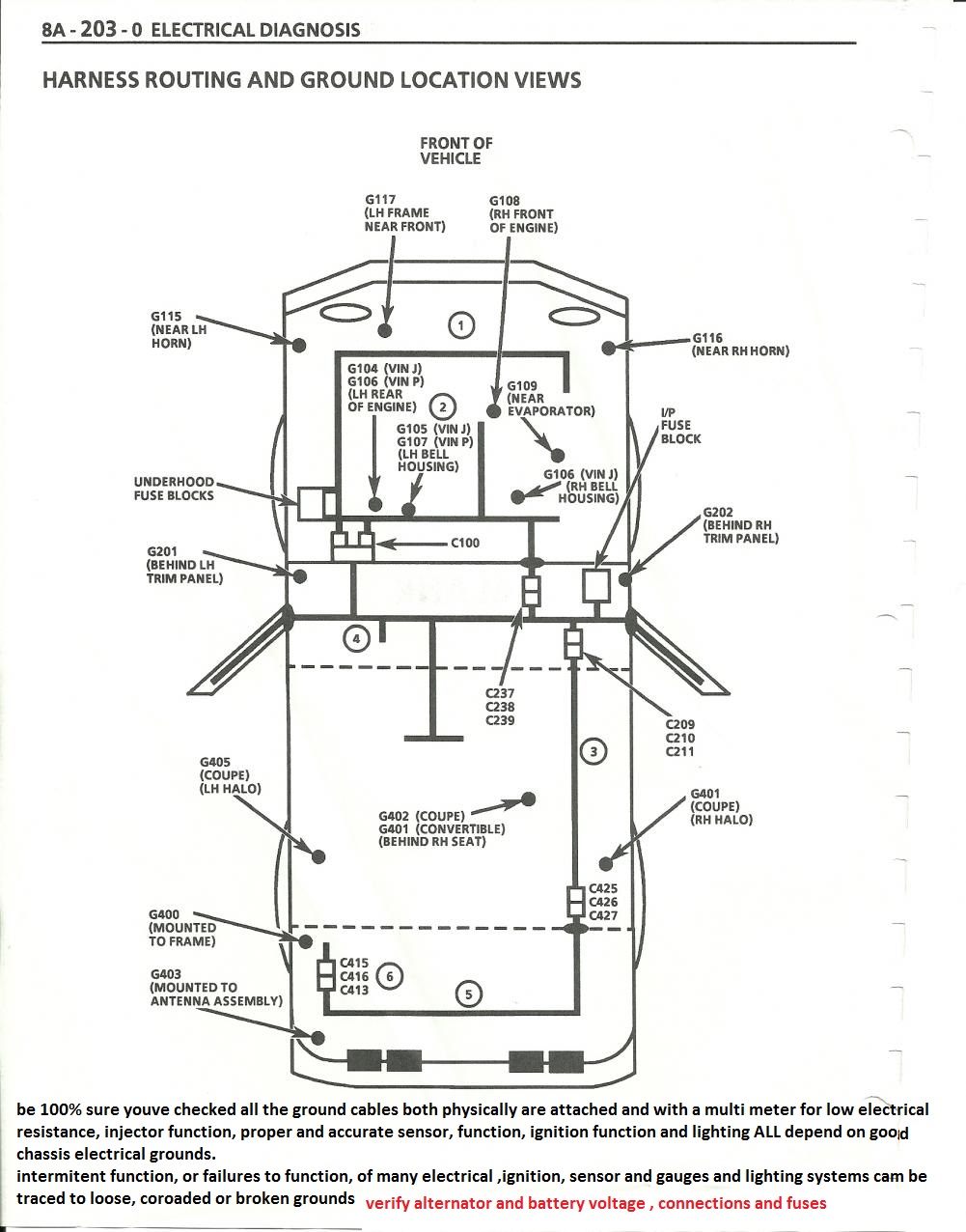
every mechanic needs an ANALOG multi meter for testing capacitors with a micro farad scale, AND a DIGITAL MULTI METER
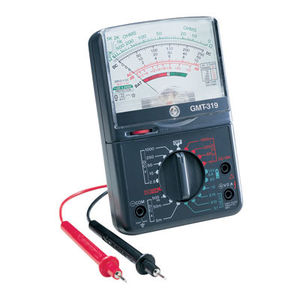
http://forum.grumpysperformance.com/viewtopic.php?f=36&t=63&p=3403&hilit=vats#p3403
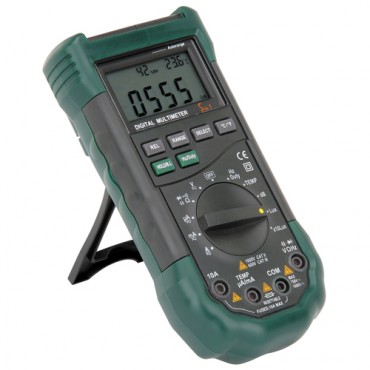
use of a shop manual and multi meter can be very helpful
TYPICAL ACCESSORY CURRENT DRAW (AMPS)
Lights
Headlights (high beam)40
Headlights (low beam) 10-22
Tail Lights 8
Safety
Emergency brake light 4
Emergency flasher 15
Turn signals 10-15
Windshield wipers 6-20
Horn 15
Brake lights 15-20
Running lights 8
Ignition
Winter starting 225-500
Summer starting 100-400
Approx. Avg. 300
Courtesy
Cigarette lighter 15-20
Interior lights 10-15
Instrument panel lights 4
Entertainment
Radio 10
Stereo Tape 10
Electric antenna 20
Comfort
Air conditioner 10
Heater 20-30
Defroster 15-30
Electric seat 20
Electric windows 20-30
TYPICAL ACCESSORY CURRENT DRAW (AMPS)
Typical Current Loads for Automotive Systems, Lighting and Accessories:
Engine Idling (no lights or accessories on) - 35 to 50 amps. This will vary depending on the number of cylinders (more cylinders draw more power for the fuel injectors and coils), the type of fuel injectors (some draw higher amp loads than others), the type of ignition system (single coil or multi-coil), the amp draw of the PCM, and the fuel pump (the amp draw will be higher with higher pressure systems).
Engine Off (nothing on) - 40 to 50 milliamps (power drain by modules in sleep mode, antitheft system and keyless entry)
Ignition Coil (single oil-filled coil older vehicle) - 3 to 4 amps.
Ignition Coil (single DIS coil newer vehicle) - 5 to 6 amps.
Ignition Coil (coil-on-plug) - 6 amps per coil.
Ignition System (primary circuit) - 6 to 20 amps.
Fuel Injectors - 4 to 6 amps peak, 1 amp hold
Electric Fuel Pump (depends on pressure and flow) - 4 to 12 amps
Electric Cooling Fan (depends on size) - 6 to 30 amps
Headlights (halogen low beam) - 8 to 9 amps per pair
Headlights (halogen high beam) - 9 to 10 amps per pair
Headlights (halogen high and low beams combined) - 17 to 19 amps
Headlights (High Energy Discharge) - 12 to 14 amps during initial start, 7 to 8 amps once bulbs are hot
Headlights (LED) - 0.6 to 1 amps per bulb
Small bulbs (incandescent) - 0.3 to 0.4 amps per bulb
Small bulbs (LED) - 0.04 to 0.06 amps per bulb
Starter Motor - 200 to 350 amps
500 Watt Sound System - 42 amps
Electric Rear Window Defroster - 10 to 20 amps
Windshield wipers - 2 to 10 amps depending on load
Heated Seats - 3 to 4 amps per seat
Power Windows - 3 amps
Electric Power Steering - 2 to 40 amps depending on load
Air Conditioner Compressor Clutch - 2.5 to 5 amps
Heater A/C blower motor (depends on load, size and speed setting) - 2 to 30 amps
related info
http://www.agcoauto.com/content/news/p2_articleid/157
http://www.fluke.com/fluke/uses/com...articlecategories/electrical/diagnosevoltdrop
http://www.aa1car.com/library/tselec.htm
http://www.hotrod.com/how-to/interior-electrical/116-0507-top-10-electrical-fixes/
now one of the lesser known causes of u-joint failure , is the result of missing or high electrical resistance engine electrical grounds,
you should always ground the engine and transmission to the chassis ground in at least two places.
its not all that uncommon for a badly grounded engine to need the u-joints , radiators , pilot bearings and starters replaced on a much higher frequency,
simply because electricity will take the path of least resistance, to flow and if the engines rubber transmission and motor mounts,
and rubber exhaust system hangers make the drive shaft a partial path for the engines electrical ground, that current can and will eventually cause damage to the u-joints.
"from ARCOAUTO
If the cables, grounds and terminals work as designed, current flow is not a problem. When cranking the vehicle, we turn the key and electricity flows from the battery to the starter motor, through a solenoid. We need the solenoid, because the key switch cannot conduct the high amperage needed to operate the starter. The solenoid acts like a heavy-duty relay. It allows the light-duty key switch to control the high-amperage starter motor.
After flowing through the starter, the current returns to the battery through the engine block. They connect the engine to the electrical system with a heavy cable, attached to the negative battery terminal. This completes the circuit. The starter uses 275 amps to turn and the same current returns to the battery. Current flow on both cables equals 275 amps. The current returning to the battery equals that leaving it.
Problems occur when corrosion and loose connections cause high resistance. The ground cable may only be able to flow 250 amps. If the starter pulls 275 amps, twenty-five amps will find another path to the negative terminal. This is known as transient current flow; electricity taking a path, other than that designed, to return to the battery. The end result can be considerable damage to seemingly unrelated components.
Transmission and suspension components are not designed to flow electricity. As the current flows through them, metal can be transferred from on part to another. This is similar to the electroplating process. In time the parts are destroyed and there may be a major failure.
Keeping all battery terminals clean, tight and with proper connections can help prevent transient current flow.
ost folks have never heard of a transient current flow. Transient current flow can cause thousands in damage to a vehicles. Normally there are very few outward signs until it is too late. Fortunately it can also be detected and prevented, with a few simple steps.
When there is an electrical load in our vehicle, current flows from the battery to the load. A positive current leaves the battery and travels through wires to the accessory. The same amount of current must also return to negative side through a ground. The ground may be provided by a wire or sometimes the vehicle body. The body is electrically attached to the negative terminal.
The current flow leaving and returning to the battery has to be equal
CORRECT GROUNDS
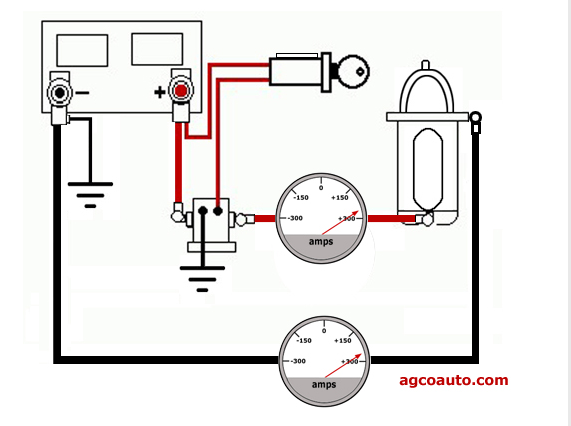
LOOSE CORROADED GROUNDS
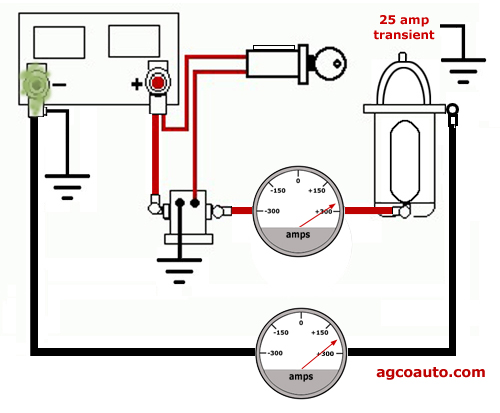
Battery terminal corrosion is a symptom of another problem
A few symptoms of transient current flow
- Premature transmission failure
- Early or repeat tie rod failure
- Early or repeat wheel bearing failure
- Early or repeat rack and pinion failure
- Flickering or pulsing headlamps
- Erratic dash volt meter
- Unexplained or repeat electrical failures "
Last edited by a moderator:
If your multi- meter shows less than 13.7 volts while the engines held at 1200rpm,that tends to make me think the alternators rather worn or the voltage regulators shot! or the battery's defective and youll need to test carefully to determine the cause. once the engine reaches about 1200rpm you should see a rather constant 13.7-14.8 volts even with a rather depleted but functional, battery.
I can assure you that swapping from a 110 amp alternator to a 200 amp alternator on my 1985 corvette made a huge difference in the way the car runs and the strength of the ignition spark
AND yes obviously the QUALITY and CARE taken in battery selection and maintenance MATERS, as does the company GUARANTEE
http://shop.advanceautoparts.com/p/...080024-P?searchTerm=optima+battery#fragment-3
viewtopic.php?f=48&t=10003&p=43220&hilit=test+alternator#p43220
http://www.summitracing.com/parts/tff-8173nep/applications/year/1996
viewtopic.php?f=36&t=3222&p=8575#p8575
viewtopic.php?f=36&t=1169&p=2392&hilit=test+alternator#p2392
viewtopic.php?f=70&t=986&p=2671&hilit=test+alternator#p2671
viewtopic.php?f=44&t=808&p=2957&hilit=test+alternator#p2957
viewtopic.php?f=36&t=63&p=5446&hilit=test+alternator#p5446
http://alternatorparts.com/cs-144-special-offer.html
http://www.summitracing.com/search?Sort ... alternator
I can assure you that swapping from a 110 amp alternator to a 200 amp alternator on my 1985 corvette made a huge difference in the way the car runs and the strength of the ignition spark
AND yes obviously the QUALITY and CARE taken in battery selection and maintenance MATERS, as does the company GUARANTEE
http://shop.advanceautoparts.com/p/...080024-P?searchTerm=optima+battery#fragment-3
viewtopic.php?f=48&t=10003&p=43220&hilit=test+alternator#p43220
http://www.summitracing.com/parts/tff-8173nep/applications/year/1996
viewtopic.php?f=36&t=3222&p=8575#p8575
viewtopic.php?f=36&t=1169&p=2392&hilit=test+alternator#p2392
viewtopic.php?f=70&t=986&p=2671&hilit=test+alternator#p2671
viewtopic.php?f=44&t=808&p=2957&hilit=test+alternator#p2957
viewtopic.php?f=36&t=63&p=5446&hilit=test+alternator#p5446
http://alternatorparts.com/cs-144-special-offer.html
http://www.summitracing.com/search?Sort ... alternator
Last edited by a moderator:

